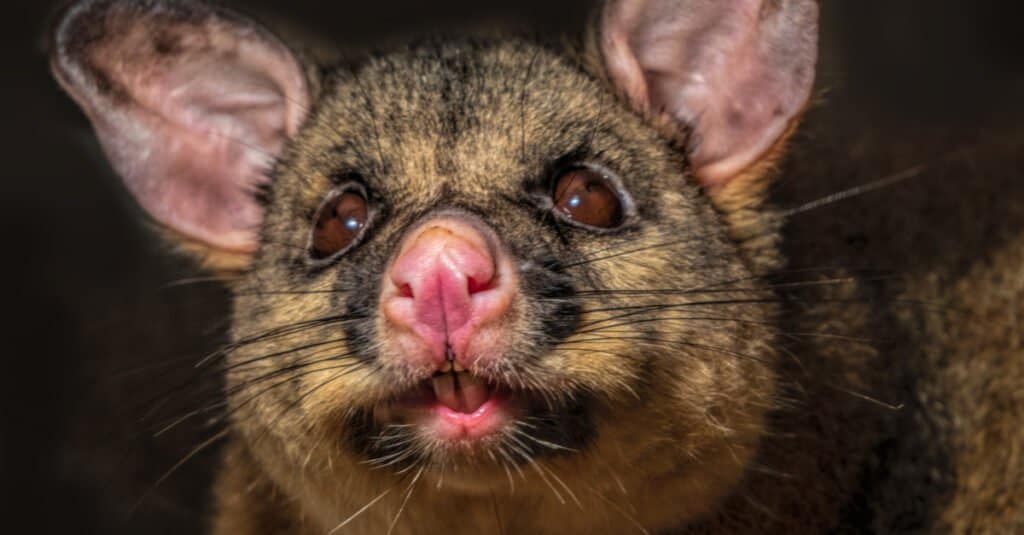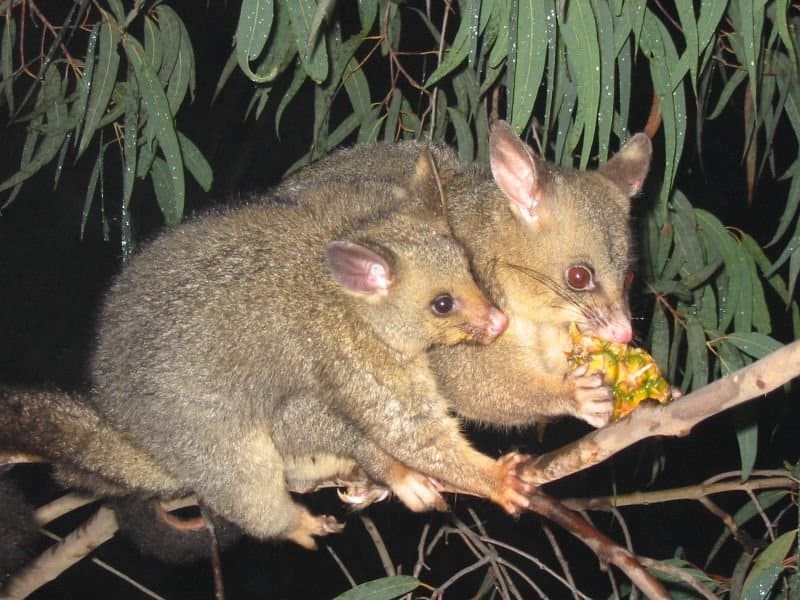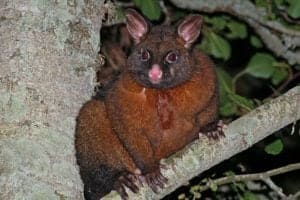When you think of marsupials, you probably picture a springy kangaroo with an adorable joey tucked safely away in her pouch. While kangaroos are indeed marsupials, they aren’t the only animals to bear the name. Other famous members of this exclusive group include wombats, koalas, and…possums! Yes, the pesky possum has a pouch, though you may have trouble finding it. But is the possum also a mammal? Is that possible? Find out this and more below!
What is a Mammal?

Mammals are animals whose offspring drink their mother’s milk.
©iStock.com/Shawn Levin
At its simplest, a mammal is an animal whose young drinks its mother’s milk. Though there are a number of other common characteristics, this is their most defining trait. All mammal babies imbibe their mother’s milk, although the ways in which they do so may vary, as in the case of monotremes like the platypus.
In addition to nursing their young with milk, most mammals have the following characteristics:
- Warm-blooded bodies
- Hair or fur
- Red blood cells without a nucleus
- Diaphragms
For a complete list of characteristics, see this article.
There are 3 different types of mammals: placental mammals, marsupials, and monotremes (egg-laying mammals).
Placental Mammals

Zebras are examples of placental mammals.
©iStock.com/GlobalP
Placental mammals are by far the largest mammalian group in existence, with almost 4,000 species in existence today. They develop their young in the womb with the help of a placenta, an organ that provides nutrients and oxygen to the developing embryo through the umbilical cord. As a result, their young are born well-developed.
As a group, placental mammals are incredibly diverse, with several surprising members. Examples of placental mammals include:
- Bears
- Zebras
- Armadillos
- Blue whales
- Bats
Marsupials

Kangaroos are examples of marsupials.
©iStock.com/JohnCarnemolla
Marsupials are the second type of mammal. Though they give birth to live young, the young are extremely undeveloped and must spend time in an external pouch to complete their development. There are 335 species of marsupials in the world, all inhabiting areas throughout Australasia and the Americas. This makes marsupials the second-largest mammalian group next to placental mammals.
Examples of marsupials include:
- Kangaroos
- Wombats
- Possums
- Opossums
- Koalas
- Tasmanian Devils
Monotremes

The duck-billed platypus is an example of a monotreme.
©Martin Pelanek/Shutterstock.com
Monotremes are egg-laying mammals. The monotreme is the rarest kind of mammal, with only 5 known species in the world. These species are:
- Duck-Billed Platypus (Ornithorhynchus anatinus)
- Short-Beaked Echidna (Tachyglossus aculeatus)
- Western Long-Beaked Echidna (Zaglossus bruijni)
- Eastern Long-Beaked Echidna (Zaglossus bartoni)
- Sir David’s Long-Beaked Echidna (Zaglossus attenboroughi)
All 5 species inhabit either Australia or Papua New Guinea. Unlike most mammals, they lay eggs instead of giving birth to live young. Monotremes do not have nipples, though they do have mammary glands. Milk from the mammary glands oozes through ducts; after they hatch, the young then lap it up.
What is a Marsupial?
A marsupial is a type of mammal. As detailed above, marsupials give birth to live young that are underdeveloped compared to the young of placental mammals. Their distinguishing feature is the presence of a pouch.
Are Possums Marsupials or Mammals?

Possums are both marsupials and mammals.
©Carolyn Smith1/Shutterstock.com
Possums are both mammals and marsupials, as marsupials are a type of mammal. This is also true of opossums, which are related to possums yet distinct. Possums live in Australia and the surrounding islands, while opossums live in North and South America.
How Does a Possum’s Pouch Work?
Possums have pouches for one reason: to provide a safe external environment for their young to finish their development. The pouch acts as a kind of second womb, completing what conception begins in the mother’s body. Scientists also call this pouch a “marsupium.” Possums’ pouches are not large compared to those of other marsupials like kangaroos. In fact, it may be difficult for casual observers to spot a female’s pouch at all.
Possum offspring (joeys) exit the birth canal and immediately seek their mother’s pouch. They crawl blindly up her body until they find it, entering and latching onto a teat. The pouch typically houses 2 teats. Most joeys fuse onto their chosen teat, as they need a constant connection to their mother to survive. They do not leave the pouch until they attain sufficient maturity. At that point, they may cling to their mother’s back.
Some people who find dead female possums on the road attempt to remove surviving young from her pouch. It is critical to ensure she is really dead, as an injured possum may lash out defensively. Though possums are not very dangerous in and of themselves, they may carry diseases transmittable through scratches or bite marks.
Possum Gestation Period
Possums gestate for an average of 16-17 days, though this may vary slightly according to species. The short gestation period is because most of the embryonic development occurs outside the womb. This is contrary to placental mammals, who complete most of their development inside the womb and are connected to their mother through the umbilical cord.
During gestation and after birth, female possums seek a safe place to hide from predators and shelter their young. Tree hollows and abandoned bird nests are the most common refuge for pregnant or nursing possums. Male possums rarely have anything to do with raising their offspring; the common ringtail possum is the only exception.
How Many Offspring Do Possums Have?

Possums typically give birth to 1-2 joeys at a time.
©Peter Firminger / CC BY 2.0, Flickr – License
Most possum species produce only 1-2 joeys at one time. Some may give birth to as many as 10 at a time, though experts estimate that fewer than 50% of these will survive. The strongest joeys find their way from the birth canal up to their mother’s pouch and latch onto a teat. If there are too many offspring for the number of teats or the size of the pouch, the strongest make it inside first, leaving the others to die.
The joeys remain firmly connected to their mother via the teat throughout their initial development. Most species, like the ringtail possum, nurse for about 6-7 months after birth, though they leave their mother’s pouch at 4-5 months of age. After this, they remain with their mother for a few more months until they reach sexual maturity at 1-2 years of age.
So are possums marsupials or mammals? It turns out they’re both! Marsupials are some of the most fascinating creatures on earth for the unique way they care for their young. Next time you see a joey peeking out of its mother’s pouch, remember: they’re not just cuddling up to be cute. In a way, they’re still in the womb!
The photo featured at the top of this post is © Timothy Christianto/Shutterstock.com
Thank you for reading! Have some feedback for us? Contact the AZ Animals editorial team.






